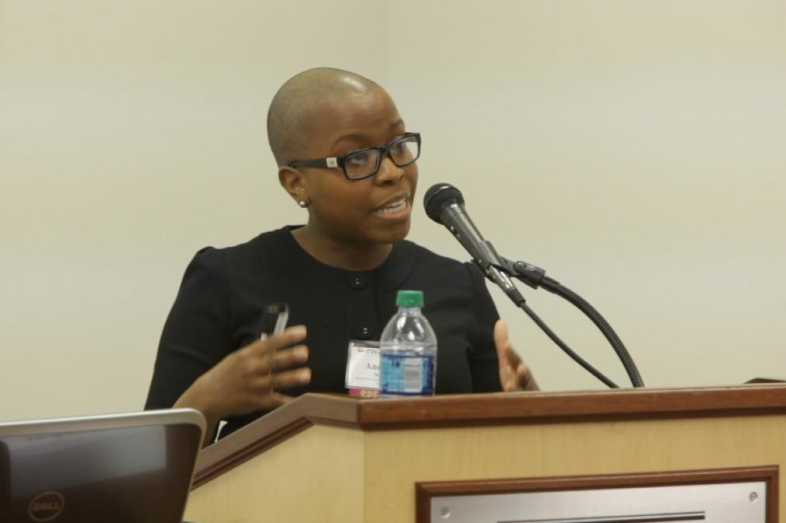

EWA recently held a seminar on STEM education and student skills at the University of Southern California. We asked some of the reporters who participated to contributes posts from the sessions. Today’s guest blogger is Ben Wermund of the Austin Statesman. You can find out more about STEM education on EWA’s topic pages.
While some progress has been made in closing the STEM gaps, white males are still taking STEM classes and graduating with STEM degrees at a higher rate than most other student groups – especially racial minority students.
However, some outdated myths about those gaps persist, including the idea that boys are better at, or more interested in, math and science than girls. The gender gap actually seems to be closing, and girls are even outpacing boys in some cases.
For instance, boys and girls – who both are taking more science and math classes than ever before – earned on average the same number of high school credits in those subjects in 2009. Meanwhile, girls tend to earn better grades in math and science classes than boys do.
“This idea that girls aren’t interested in math, science – that girls can’t do math and science – doesn’t bear out in the data,” said Andresse St. Rose, a senior researcher at the American Association of University Women who in February spoke at an Education Writers Association STEM conference in Los Angeles.
That’s the good news. The bad? The myth is still pervasive and girls tend to believe it, thinking they shouldn’t be interested in STEM subjects, and even if they are interested, they couldn’t succeed in them, St. Rose said. “Girls think they have to be that unicorn to be an engineer,” she said.
Meanwhile, the STEM gap between races still exists, and in some cases is deepening, even as more minorities are taking more STEM courses. In 2009, white students earned far more high school math and science credits than minority students did. And while some student groups – Asians and whites — continue to earn better grades in those classes, some minority groups’ progress has slowed. From 1990 to 2000, for instance, all student groups were making better and better grades. Over the nine years that followed, however, Asian and white students continued to see grades rise, while improvement largely leveled off for Hispanic and black students.
“These are some huge disparities we really need to pay attention to,” St. Rose said.
The disparities are clear in who takes the Advanced Placement calculus tests, which St. Rose said act as a gatekeeper. More than 250,000 students take the exam, about half of whom are girls. But only 13 percent of test-takers are Hispanic. Just 5 percent of them are black. Meanwhile, about 60 percent of students who take the test pass, while just 30 percent of Hispanic and black test takers do.
The problem isn’t with the students, though, it’s with the opportunities they are offered, said Alicia Dowd, an associate professor of higher education at the University of Southern California’s Rossier School of Education and co-director of the Center for Urban Education. “It’s not an achievement gap, but an education gap,” said Dowd, who argued that segregation still exists in education.
The vast majority of Hispanic and black students who go to college attend community colleges, while their white peers head to larger research institutions. The difference in how those types of institutions have spent per pupil from 1999 to 2009 is huge. Research universities spent $14,000 more perp pupil over that time. Community colleges spent just $1 more.
“The financing inequities are very present,” she said. “Those financing inequities do matter to students.”
But the problem doesn’t end there, Dowd said. The education gap is produced by perceptions, as well: how students view themselves and each other, and the way that teachers view their students. Large numbers of black and Latino students are placed into noncredit, remediation courses in colleges and universities because many tests we currently use don’t adequately measure student abilities, Dowd said.
Put more simply: “Higher education is pushing students out of STEM classrooms.”
Dowd said it’s important to get away from relying on standardized tests along with the stereotypes and negative perceptions they produce. She pointed to the military, which uses simulation-based learning to effectively teach students and get them interested in STEM subjects. That model is much more successful than many community college courses that essentially repeat what students were taught in K-12 classes, she said. “The problem resides in educational institutions and practices, but we need to develop the cultural competencies and organizational behaviors that will retain students,” Dowd said. “That’s why I call it an education gap and not an achievement gap.”


